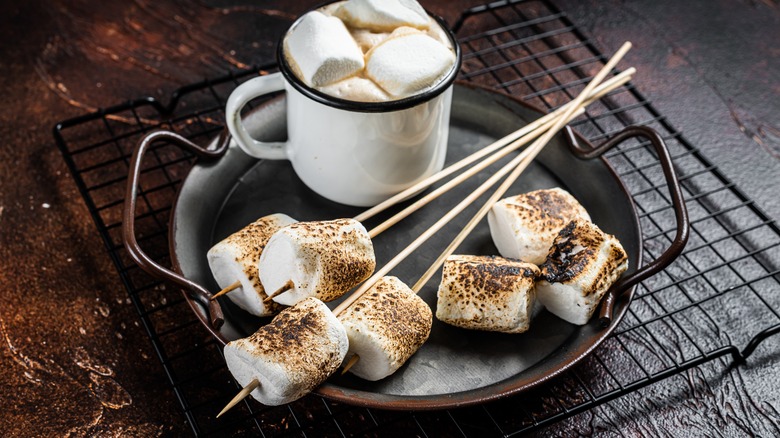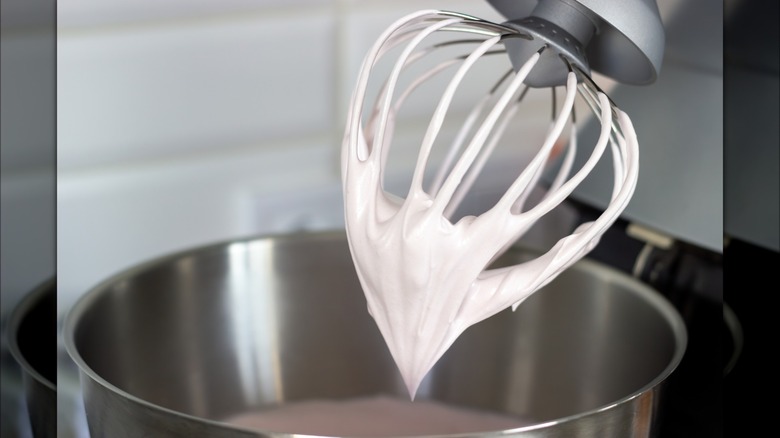The Big Mistake An Expert Baker Avoids With Homemade Marshmallows
We may receive a commission on purchases made from links.
As simple as store-bought marshmallows may look, making them from scratch requires much care and attention. With a correct way to melt the sugar and mix the ingredients so they spread evenly, it's surprisingly easy to make mistakes. However, according to one expert, the biggest error can occur during the whipping stage.
Mashed spoke to Jessie Sheehan, celebrated cookbook author, recipe developer, baker, and host of the No. 1 baking podcast in the U.S., "She's My Cherry Pie." Marshmallows are prominent on Sheehan's website and in her cookbook, "Snackable Bakes: 100 Easy-Peasy Recipes for Exceptionally Scrumptious Sweets and Treats," which features desserts in which she uses them to fluff up treats and even ice cakes.
When it comes to making marshmallows, Sheehan explains that "under-whipping the marshmallow batter is probably the biggest mistake people make, and it can lead to soft, overly moist [and] soggy, leaky marshmallows." The perfect marshmallow should be pillowy, fluffy, and slightly buoyant, so "soggy" and "leaky" should be avoided at all costs! According to Sheehan, there are two key things you need to do to avoid this pitfall: Keep an eye on the bowl's temperature and monitor the size of your batter.
A cool bowl is key to fluffy marshmallow batter
Check the batter's size and your mixing bowl's temperature after you've finished whipping your batter. The order in which you do this is up to you, although it's much easier to eyeball the batter's size and then determine whether it's worth checking the bowl's temperature.
"The batter should be fluffy, smooth, and tripled in size," Sheehan explains. Make a note of how high the batter is in your bowl before you begin whipping. (If your bowl has measurements, this will be much easier.) The size increase occurs because of air pockets formed during whipping. This is key to the marshmallow's fluffiness. It's simple: no air pockets, no fluffy marshmallows.
If your batter has successfully tripled and looks nice and fluffy, give the bowl a light touch and check the temperature. According to Sheehan, you need to "make sure the bottom of your mixer bowl is room temperature when you finish whipping or just slightly warm. If it is still super warm, it's likely your batter is under-whipped." Like the size increase, this cooling occurs due to the introduction of air to the hot ingredients, influencing the mixture at a molecular level. The air binds to the batter, creating a tangled polymer that will solidify on cooling. This is why the bowl temperature is so important. If the bowl is still hot, this reaction has not yet occurred and that ideal gel polymer has not been created.

